인쇄 및 제지 산업

인쇄 산업
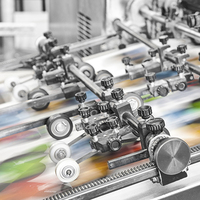
Printing machinery needs to operate with precision
인쇄 산업에서는 유연성, 품질 및 속도에 대한 증가하는 요구에 영향을 받고 있습니다. 소형에서 대형까지 다양한 인쇄 작업은 높은 유연성과 빠른 기계 전환이 필요합니다. 동시에 품질 요구 또한 중가하고 있습니다.
인쇄과정(press) 및 인쇄 후 과정(postpress) 의 기계는 재료 낭비와 기계의 다운 타임 을 최소화하기 위해 정확하게 작동 해야합니다 :
- Precise miniature sensors ensure the smooth operation of your printing processes
- Ultrasonic sensors detect double sheets and splices regardless of the material or color
- Misfed sheets in collating, folding, and binding machines are also eliminated: Special vision sensors reliably verify sheets by image comparison or code reading
Pepperl+Fuchs는 인쇄전과정(Prepress)-인쇄과정(Press)-인쇄후과정(Postpress)의 모든 어플리케이션에 올바른 센서 솔루션을 제공합니다.
.
Paper industry
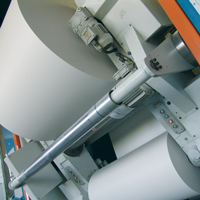
Paper roll detection
Applications in the paper industry range from raw material production to finishing. Our ultrasonic and photoelectric distance measurement sensors detect paper rolls, monitor web stock diameters, and ensure consistent web tension. Robust encoders and positioning systems precisely detect cylinders and rollers to control web tension and to avoid web breaks. Ultrasonic sensors reliably detect splices and thus reduce material waste.
We deliver complete individual solutions. Our experts help you select the right sensor technology for your specific application.
Our product highlights for the print and paper industry
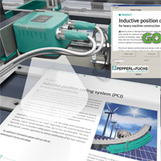
The powerful BIS510 vision sensor is the number 1 sensor for sheet verification in all common collating, folding, and binding machines. The vision sensor ensures safe sheet verification in high-speed applications by image comparison and 1-D and 2-D code reading.
- Comparing of sheet sequences and reliable detection of misfed sheets
- Automatic Teach-In of reference sheets reduces operator workload and downtime
- Safe detection even on reflective surfaces
- Innovative image processing technology ensures reading of very large barcodes
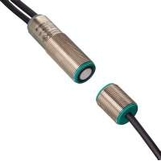
Double sheet and splice detection using ultrasonic sensors has proven itself in the printing, paper, and packaging industry. Printing machine downtime and high repair costs due to double sheet events can now be eliminated due to the ultrasonic series UDC-18GM. Additionally, the UGB-18GM series reduces waste by reliable identification of web splices, double layers, and labels.
- Insensitive to printing, colors, and reflective surfaces
- Robust and insensitive to paper dust
- No Teach-In required
- Fast response time
- Great mounting flexibility, easily fits into tight spaces
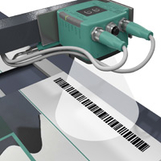
The Optical Print Inspector is a versatile solution for code reading in the paper, printing, and packaging industry. The vision sensors read Data Matrix, Code 2/5, Code39, Code128, and Pharmacode symbologies at high speeds of up to 10 m/s at 30 readings/s.
- Multicode reading – detection of up to four different codes simultaneously
- Code quality output
- Match code function and logo comparison
- Reliably captures and reads very long barcodes by taking several images
- Large depth of focus of up to 120 mm allows code reading for varying distances with one setting

The photoelectric miniature sensors ML4.2 Series are used for precise sheet alignment, sheet presence, and edge detection in all prepress, press, or postpress machines. Infrared light and the triangulation principle guarantee switching accuracy, even under heavy dust. The switching accuracy has a direct impact on the laser-engraving process, the print result or the die cutting precision.
- Very high degree of switching accuracy
- Precise object and edge detection
- Detectable targets range from deep black, reflective to transparent materials
- Miniature housing easily fits into tight spaces








 +82 2 34819494
+82 2 34819494